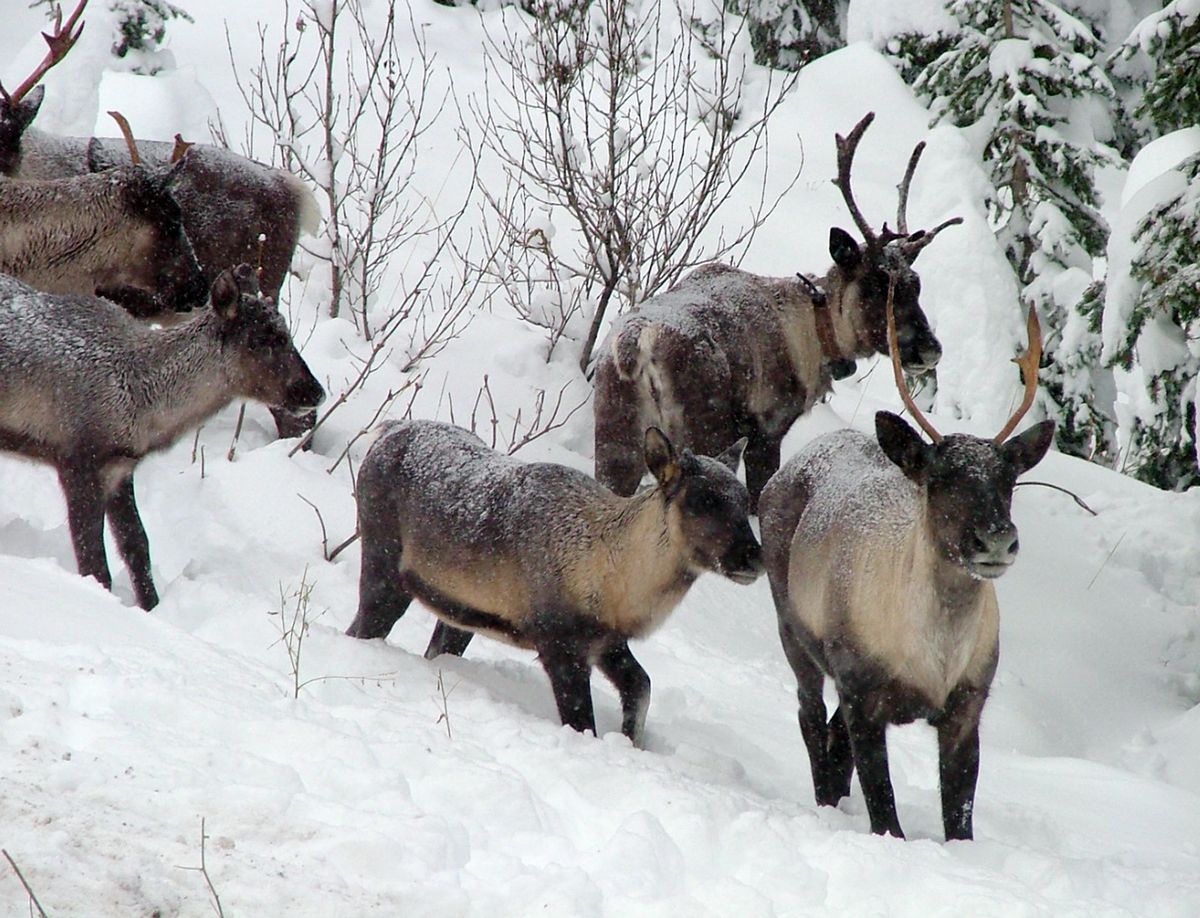Plan designates land for Selkirk caribou
Limits on logging, fire control, other activity possible in areas

The U.S. Fish and Wildlife Service announced a proposal Tuesday to designate 375,562 acres of critical habitat in North Idaho and northeastern Washington for southern Selkirk Mountains woodland caribou, which are protected under the Endangered Species Act.
The action, prompted by appeals starting in 2002 by environmental groups, could lead to restrictions on logging, fire control and human activity in some areas.
U.S. Forest Service officials say forest management plans and international agreements already restrict human activities in the broader 1.4-million-acre caribou recovery zone, which includes a portion of the two states and British Columbia.
But environmental groups had to press for a 2005 federal court order to force the Idaho Panhandle National Forests and Idaho Department of Lands to close snowmobiling in certain high elevation areas of the Idaho Selkirks north of Priest Lake.
The proposed critical habitat could reinforce those types of restrictions in portions of Idaho’s Boundary and Bonner counties and Pend Oreille County in Washington.
“We’ve received the proposal today just like other members of the public and we are still in the process of reviewing it,” Jason Kirchner, Idaho Panhandle National Forests public affairs officer said Tuesday. Forest wildlife biologists likely will offer comments to the Fish and Wildlife Service prior to the Jan. 30 deadline, he said.
Wilderness boundaries or road closures have been in place since 1988 to keep vehicle traffic out of most of the caribou recovery zone on the Colville National Forest, said Mike Borysewicz, wildlife biologist on the Sullivan Lake District.
“I wouldn’t expect this (proposal) to change much in what we’re already doing,” he said.
The southern Selkirk Mountains caribou was listed as an endangered species in 1984. State and federal wildlife officials estimate 45 caribou exist in the Selkirk Mountains recovery zone.
The formal habitat proposal allows the Fish and Wildlife Service to compile more information from all agencies, tribes and groups associated with the caribou recovery areas, said Brian Kelly, the federal Fish and Wildlife supervisor for Idaho.
The primary threat to the species’ survival is the loss of old growth forests caused by timber harvest and wildfires, he said.
Human activities such as roadbuilding and recreational trails can fragment caribou habitat and usher predators into the caribou’s range.
The proposal wouldn’t necessarily preclude forest thinning and controlled burns, which are used to improve potential caribou habitat within the recovery zone, Borysewicz said.
The Colville National Forest includes 105,323 acres of the 1.4 million acre Selkirk Mountains Woodland Caribou Recovery Area while Idaho Panhandle National Forests administer about 434,000 acres.
Defenders of Wildlife, The Lands Council, Selkirk Conservation Alliance and Center for Biological Diversity petitioned the Forest Service to designate critical habitat for the species in 2002.
“Critical habitat is an essential tool for recovering endangered species like the woodland caribou, and they deserve our best efforts,” said Mike Leahy, Defenders of Wildlife Rocky Mountain director. “To protect endangered animals, we must protect the places they live.”